Want to Subscribe?
Read Corporate India and add to your Business Intelligence

![]() Unlock Unlimited Access
Unlock Unlimited Access

Published: July 15, 2022
Updated: July 15, 2022
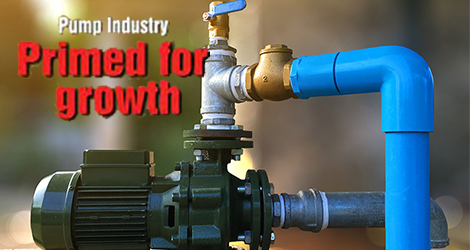
The Indian pump industry is flying high, not just doubling but trebling in size – in the last one decade from Rs 6,670 crore in 2012 to around Rs 20,000 crore today. And more is to follow as it caters to robust demand both at home and globally. In fact, president of the umbrella body Indian Pump Manufacturers’ Association Milind Alwekar sees it growing at a CAGR of 7% vis-à-vis the global CAGR of 3.4%. His optimism is endorsed by the research report of US-based Shibuya Data Count. Having weathered recent global and domestic headwinds caused by US inflation, Brexit, demonetisation, GST and the Covid-19 pandemic, the industry continues its growth story.
The latest drivers are the widening scope of pumping applications from the traditional agri and infra segments and the emergence of intelligent pump systems and micro disc pump technology, which are set to capture even more of the global pump market pie.
The $ 2.5 billion (translating to around Rs 20,000 crore) Indian pump industry is riding high, going from strength to strength. During the last 10 years, the size of the industry has trebled from Rs 6,670 crore in 2012 to around Rs 20,000 crore in 2022. The prospects going ahead are all the more promising on account of robust domestic demand and rising exports from as many as 130 countries. Maintains Milind Alwekar, a veteran of the pump industry and current President of the Indian Pump Manufacturers’ Association (IPMA), “The Indian pump industry is growing at a CAGR (compounded annual growth rate) of 7 per cent and will reach $ 3.3 billion by 2026. Interestingly, while the global pump industry is growing at a CAGR of 3.4 per cent, the Indian pump industry is growing at a rate of around 7 per cent.”
After an in-depth study of the Indian pump industry, a global team of experienced research professionals from Shibuya Data Count of the US have stated in a report released on July 4, 2022 that the Indian pump market is expected to grow in terms of revenue as well as at a CAGR of 7 per cent during the next 10 years from 2022 to 2031. According to the research report, the demand for pumps is expected to grow at a steady rate due to the increased application of pumps in several end-user sectors. Pump manufacturers in India have hitherto focused solely on the agriculture and construction services sectors.
The increasing oil demand and expanded investments in water and wastewater treatment activities are likely to affect the pump market substantially. The domestic demand is also majorly met by local vendors, with the industry having robust capabilities to meet this demand. India’s pump market is likely to witness the emergence of intelligent pump systems and micro disc pump technology in the next few years. Intelligent systems are expected to control and regulate fluid flow or pressure, adjust to process changes and have a fault-tolerant design. The market contributes significantly to the country’s GDP as these devices play a major role in the agriculture and infrastructure sectors.
According to this report, the following factors are likely to contribute to the growth of the pump market in India during the forecast period:
Needless to say, the pump industry has passed through difficult times. In recent years, the slowdown of the Indian economy, the inflationary price spiral in the US, the financial meltdown in certain European countries, the adverse impact of Brexit, combined with disturbing developments at home like demonetisation of high-value currency notes, the sudden and half-baked introduction of GST, the depreciating value of the rupee and, above all, the Covid-19 pandemic – all these have proved to be stumbling blocks to the growth of the pump industry. But resilient as it is, the industry has successfully weathered these headwinds and has continued its journey on the growth path.
The Indian pump industry is a veritable smorgasbord of products. It manufactures various types of pumps of the best international quality, including agricultural pumps, industrial pumps, open well sub-pumpsets, submersible pumps, electric moon set pumps, irrigation WS pumps, solar pumps, energy efficient pumps, IoT (Internet of Things) pumps and domestic pumps.
In fact, the industry has tremendous growth prospects as domestic demand is buoyant and export demand is on a steady rise. As far as domestic demand is concerned, with increasing population and urbanisation the demand for water has increased exponentially. To meet the food requirements of the increasing population, it is imperative to ensure water supply to agriculture. As more people migrate to urban India for a better life, they further increase the demand for water. Water is equally important to industries. In power plants, water is used for cooling purposes and improves thermal efficiency. Increased demand for water creates an increased need for pumps. As the need for pumps increases, it is inevitable to ensure the availability and supply of technologically advanced pumps — pumps which consume less and give more. Says Mr Alwekar, “We attempt to achieve results with continuous investments for improvements in our R&D and manufacturing infrastructures. We also try to ensure our proximity to locations of demand generation. We expect our initiatives further strengthen our position in the market and help us leverage our strengths outside the boundaries of India.”
As India is primarily an agricultural country, it is quite obvious that agricultural pumps account for the lion’s share of around 30 per cent and are growing at a rate of 7 to 8 per cent per annum. Needless to say, the well-being of the agro pump segment depends on the monsoons and the government’s agricultural policies. Recent Union budgets have made it crystal clear that the Modi government is extremely keen to look after the interests of the farming community as the ruling party obviously does not want to alienate such a large rural vote bank. Demand for agro pumps is steadily growing on account of a rising population and growing urbanisation. Again, the growing water shortage is pushing up demand for pumps as ground water levels fall, while increasing electrification of rural areas is adding to the demand for agro pumps. Besides, government support through various initiatives such as ‘Swachch Bharat Abhiyan’ and ‘Smart Cities’, along with financial help sent directly to farmers’ bank accounts, is bound to further accelerate demand for water pumps.
Prospects for agri pumps have improved considerably as the monsoon has made excellent progress so far. And after the historic Kisan Andolan, the government is ready to extend all possible help to farmers. Following the Ukraine-Russia war, there has been an acute shortage of agri products which has led to a steep rise in the prices of cereals, which in turn has fuelled the inflationary price spiral at home as well as abroad. Thus, the government as well as farmers are keen to give a big boost to agricultural production, mainly foodgrains. Demand for industrial pumps is also on the rise – both domestically as well as on the export front. At home, the flourishing chemical and speciality chemical segments have given a big push to demand for industrial pumps. Thanks to the global MNCs’ policy of ‘China+1’, Indian exports of chemicals is on the rise. Rising industrialisation has also contributed significantly in pushing up demand for highquality industrial pumps.
Export demand for industrial pumps has got a big boost on account of the high quality of India-made industrial pumps. IPMA president Mr Alwekar sees a huge growth potential for Indian industrial pumps which are in good demand throughout the world and are exported to around 130 countries. The pump industry is classified into two segments — centrifugal pumps and positive displacement pumps. Centrifugal pumps account for 95 per cent of the market, within which single-stage radial flow pumps and submersible pumps together make up 7 per cent. Rotary positive displacement pumps account for the largest share of positive displacement pumps.
Pump technologies can be broadly categorised into three strata of intensity and complexity:
“Prospects for the Indian pump industry are highly promising going ahead,” avers Milind Alwekar, President of the Indian Pump Manufacturers Association.
In an interview to Corporate India, Mr Alwekar said, “I am very optimistic about the future of the pump industry in India. In fact, India has emerged as a large hub for the pump industry. The pump market here is fragmented with the presence of small, medium and large manufacturers. What is more, most of the top foreign brands have established their manufacturing set-up in India and are gradually considering supplying from India to meet their international demand.”
Excerpts from the interview:
Corporate India: Please throw some light on the current standing of the Indian pump industry. What is the size of the industry? At what rate is it growing?
Milind Alwekar: The Indian pump market was valued at $ 2.5 billion in 2021 and is expected to reach $ 3.3 billion in 2026, growing at a Compounded Annual Growth rate (CAGR) of 7% during 2021- 2026. The global pumps market size was around $ 67 billion in 2020 and is expected to grow at a CAGR of 3.4% from 2021 to 2026. India contributes around 2.0% to 2.5% to the global trade of pumps.
Competitive pricing, improved efficiencies and manufacturing capabilities are major factors boosting growth in the pump market in India. Maharashtra, Tamil Nadu, Madhya Pradesh, Andhra Pradesh and Karnataka are major markets for agricultural pumping systems, whereas Gujarat, Maharashtra, Tamil Nadu amd Karnataka are major markets for industrial pumps.
CI: Is the Indian pump industry meeting the entire domestic requirements or there is still a need to import?
MA: The Indian pump industry is, by and large, meeting the entire domestic requirements. However, there are some specific applications in sectors; viz., oil & gas, nuclear and some chemical segments, where the buyer may prefer to import the pumps.
CI: How do you compare the quality of Indian pumps to international standards? What are our exports? To which countries do we export our pumps?
MA: Indian pump manufacturers are slowly but surely making a global footprint. World-class manufacturing capabilities, improvements in efficiencies, seamless adaption of technological advancements in production of pumps such as 3D printing, IoT and Automation, drastic improvements in foundry technology and competitive pricing are key factors making Indian pumps acceptable globally
Exports of pumps are estimated at around 12% to 15% of the total pump market. Indian pumps are being exported to more than 100 countries, major exports being to the US, Europe, African countries and the Middle East

Primary coolant pumps of heavy water circuits.
Liquid sodium coolant pumps for fast breeder re actors.
Cooling water circulation in thermal power gen eration.
Transfer from water-rich areas to water-starved ar eas across hundreds of kilometres.
Interestingly, the Indian pump industry has a proud record of indigenous R & D in all three strata of technological intensity – for mass-produced pumps as for agriculture, for gigantic pumps as for interlinking rivers, and for pumps for critical services as in nuclear power generation. The Indian pump sector is making big strides in indigenisation of advanced technologies.
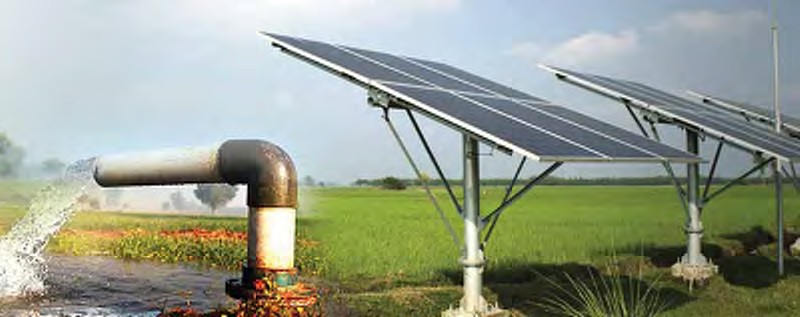
Needless to say, in an agricultural country like India, the farm sector accounts for a major share of the pump market. What is more, it will remain the thrust market as the government – for its own socio-political reasons — pays more attention to the farm sector with the target of enhancing agricultural production, ensuring food security and doubling the income of farmers.
Interestingly, the industry has made rapid strides, adopting new technologies, innovating constantly and evolving norms to produce pumps comparable to the best international products. Admittedly, it has been enriched by the association of renowned foreign players. German major KSB SE & Co, known for its innovative technology and excellent service, set up a subsidiary, KSB Pumps, in Pune. Denmark-based Grundfos Holdings, the undisputed global leader in advanced pump solutions and a trendsetter in water technology, set up shop in Chennai as Grundfos Pumps India Pvt. Ltd. India’s undisputed market leader in the segment, Kirloskar Brothers, joined hands with leading Japanese company Ebara Corporation, known throughout the world for its amalgamating technology, and set up a joint venture called Kirloskar Ebara Pumps. Several other foreign companies are active in India or have entered into collaborations or supplied technology to Indian manufacturers. Domestic companies have not been far behind in innovation. Roto Pumps, a Noida-headquartered company has pioneered the indigenous manufacture of progressive cavity pumps and twin screw pumps, while Ahmedabad-based Waterman Industries has become the first pump maker in India to receive the coveted ‘Zed’ mark. Again, Kolhapur-based Chemlin Pumps and Valves is the pioneer in the development of vertical submerged-type centrifugal pumps in India. The pumps industry caters to a wide spectrum of needs in the agriculture sector, including requirements for irrigation, fertilisers, insecticides and pesticides, preservatives and packaging, and handling and disposal of molasses in sugar manufacture. For the fisheries and aquaculture sectors, the pump industry provides specialised corrosion-proof sea water pumps that ensure smooth flow for marine life into ponds.
The influence of linearisation, privatisation and globalisation of the Indian pump market has compelled manufacturers to export their products to foreign countries, where the demand for pumps is high in industries such as oil & gas, steel and mining. Currently, the US and Germany are the major revenue contributors to the market. Factors such as the rising demand for oil and increased investments in water and waste-water treatment activities will have a huge impact on pump exports from India, which will drive the demand for the market during the predicted period. Prospects for the Indian pump industry going ahead are highly encouraging. According to a research analysts’ report released by Shibuya Data Count USA, the centrifugal pump market in India is expected to be competitive with several established vendors abroad expanding their product portfolio. Centrifugal pumps are best suited for non-air or vapour-containing liquids with low viscosity — the technology capabilities of centrifugal pumps, particularly submersible pumps, are a key driver for increased demand from India’s agricultural sector.
As far as industrial pumps are concerned, they are witnessing a high demand from the cement, steel, oil and gas, water and wastewater sectors besides chemicals. The increased oil and gas demand and high investments in water and wastewater treatment activities are projected to increase sales substantially and the industrial pump market in India is expected to reach over $ 2 billion by 2031. Water and wastewater, chemical, pharmaceutical, construction, food & beverage and mining are the major end-users in India. Factors such as the increased focus on energy-efficient products in water and wastewater industry, the development of generic pharmaceutical production, rapid urbanisation and the rise in massive housing schemes and expansion in infrastructural projects are likely to influence the growth of industrial pumps in India going ahead.
In terms of geographical analysis, by revenue, Southern India is expected to lead the domestic pump market. The region is likely to register revenues of over $ 1.1 billion by 2031. Karnataka, Tamil Nadu and Andhra Pradesh are projected to emerge as the major contributors to the market revenue. The increasing awareness of energy star ratings among consumers is expected to drive the market toward energy efficiency. The continuous decrease in groundwater levels is increasing the demand for submersible pumps among farmers. With the Karnataka government offering electricity to farmers at subsidized rates, there has been a high demand for pumps from the industrial sector, which is expected to augur well for pumps’ growth, especially agricultural ones. The rise of the automobile, agricultural, aerospace, textile & garment, biotech & heavy engineering industries is expected to significantly influence the market. Tamil Nadu has built a base of over 200,000 agricultural devices, among the largest in India.
Thus, the prospects for Indian pumps – both agricultural and industrial – are highly promising going ahead. While the Techsca Research report says that the water pump market in India will surpass $ 4 billion by 2023, the IMAR group of the US in its research report expects the industrial pump market in India will grow at a CAGR of over 4.5 per cent during the next five years (2022-2027). According to the research report released by Shibuya (US), the overall Indian pump industry will grow at a CAGR of 7 per cent during the period between 2022 and 2031. All in all, then, the stars seem perfectly aligned for a rosy future for the Indian pump segment.
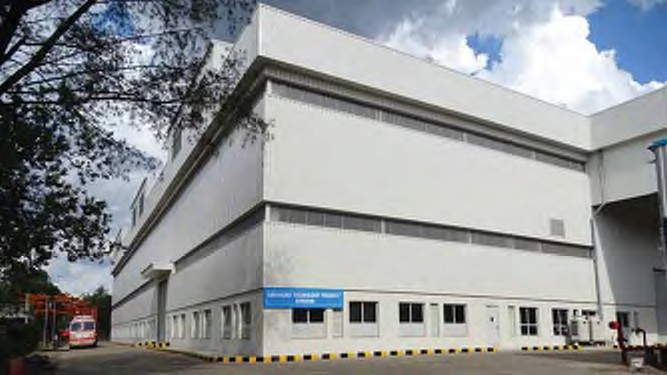
Kirloskar Brothers Limited (KBL) is a world-class pump manufacturing company with expertise in engineering and manufacturing systems for fluid management. A partnership firm was established as Kirloskar Brothers in 1888 by Shri Laxmanrao Kirloskar – from which various group companies emerged later. Kirloskar Brothers was officially registered into a legal entity as Kirloskar Brothers Limited on January 15, 1920.
KBL is the flagship company of the $2.1 billion Kirloskar group. KBL, a market leader, provides complete fluid management solutions for large infrastructure projects in the areas of water supply, power plants, irrigation, oil & gas, and marine & defence. It engineers and manufactures industrial, agriculture and domestic pumps, valves, and hydro turbines. Laxmanrao’s son Shantanurao was instrumental in manufacturing India’s first centrifugal pump, diesel engine, machine tool, electric motor and air compressor. He expanded KBL’s footprints in India and the world markets and went on to establish the Kirloskar group of companies.
Sanjay Kirloskar, Chairman and Managing Director, took over the helm in 1985. Over the years, KBL has marched ahead with innovative products which have enabled it to carve a niche globally. KBL is a global conglomerate equipped with the best technologies in the world. It is also India’s largest centrifugal pump manufacturer with eight manufacturing facilities in the country, along with other international subsidiaries and manufacturing operations in the Netherlands, South Africa, Thailand, the United Kingdom and the US. KBL has 12,700 channel partners in India and 80 overseas and is supported with the best-in-class pan-India network of authorised service and refurbishment centres.
All manufacturing plants of KBL have the necessary Quality, Environment, Occupational Health & Safety and Energy standard certifications under the Integrated Management System (ISO 9001:2015, ISO 14001:2015, ISO 45001:2018 and ISO 50001:2018). The company’s Kirloskarvadi plant is a state-of-the-art integrated manufacturing facility, which houses one of Asia’s largest hydraulic research centres with a testing facility of up to 5000 kW and 50,000 m3 /hr. We are driven by our purpose of “Transcending Boundaries, Enriching Lives”. Since our inception, through our products and services, we have marked our presence across all continents of the world. KBL exports to over 130 countries. Apart from being India’s first and largest pump manufacturing company, over the last few decades we have extended and strengthened our global footprint as a multinational conglomerate. The company acquired some of the most significant fluid management companies around the world, including SPP Pumps Ltd, now the UK’s largest pump manufacturer.
Over the years, the company has carved a niche as a global market leaders in the fluid management industry, making India proud globally. The company’s products, including pumps, valves and turbines, are used across all industries. Says an elated Dr Ravi Birajdar, Vice-President and Head (Corporate R&D), “We are proud that our pumps are used by millions of farmers and households every day.” Apart from manufacturing world-class products, the company’s service forms an equally important pillar in its business strategy. KBL has established one of the largest networks of service centres across the country, providing prompt and reliable service to its customers.
Pointing out that “KBL focuses on improving business efficiency and performance through process optimisation, technology adoption, value-added products, service delivery improvement, and customer engagement,” Dr Birajdar adds that “we continue to work towards consolidating our leadership position in fluid management solutions, gaining marketshare in key application segments and enhancing our business in underpenetrated regions. The company brings into the market future-ready, energy-efficient and sustainable products. For example, we were the first in 2016 to launch an IoT-based remote pump monitoring and predictive maintenance system – KirloSmart®, India’s first micro hydropower generator – PICO, and a series of newgeneration energy-efficient pumps for the domestic and agriculture segment.”
The company has devised a new strategy to shift KBL from a project company to a product company. Says Dr Birajdar, “Our focus on value-added products as part of the company’s strategy to continue moving its business from projects to products continues to work well. More than 80% of revenue now comes from product sales. Besides introducing new advanced products into the market, we continue to enhance the efficiency and performance of our entire range of products. Recently, we received many patents, which is a testimony to our quest to keep adding value through innovation. The company currently has 17 national and international patents registered in its name. Reliable and sustainable performance of our products while resulting in significant cost savings remains our key differentiating factor in the market. In fact, the success of some of our innovative products, such as the Lowest Life-Cycle Cost (LLC) pump series, Sodium and Canned Motor pumps for the nuclear industry, Concrete Volute Pump (CVP), Multistage Multi Outlet (MSMO) pump, etc., is attributed to our strong R&D capability.”

Referring to the company’s growth plans, Dr Birajdar reveals that “KBL continues to invest in key areas including Research & Development, capability expansion across plants and the latest technology. We recently opened an Advanced Technology Product Division (ATPD) at Kirloskarvadi for manufacturing high-end technology products especially for nuclear applications. We are also extending our product range in all product verticals; viz., pumps, valves, hydel turbines and motors. Our recently developed products comply with the Euro Norm of Minimum Efficiency Index, though in India this norm is yet to be introduced.”
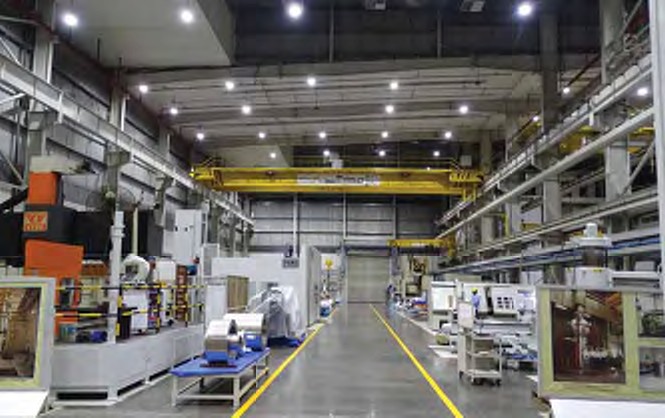
According to him, the company always strives towards providing technology-driven innovation in customer service. “Technology is the basis of our practices, and we invest heavily in new technologies that add value to our products and processes. KBL owns the largest 3D Sand Printer, the only such machine in India and 5th in the world,” he says.
Maintaining that “Kirloskar Brothers has helmed some of the most important projects over the last few decades, silently contributing towards building the dream of a better and self-reliant India,” Dr. Birajdar adds that “the company has been among the forerunners towards ulfilling the dream of an Atmnirbhar Bharat, a movement encouraged by the government over the last few years. KBL set up one of the world’s largest pumping schemes at Sardar Sarovar Narmada Nigam Limited (SSNNL) in Gujarat, providing drinking water to more than 30 million people. Recently, the company has supplied fire safety pumpsets for the world’s tallest monument, the Statue of Unity, built in memory of Sardar Vallabhbhai Patel. KBL’s fire-fighting pumpsets are also responsible for protecting the all-weather Atal Tunnel, the world’s longest tunnel above 10,000 feet (3,048 m). Besides, KBL pumps are used across the country’s nuclear programme, including heavy water plants and fast-breeder nuclear reactors.
Dr Birajdar laments that “however, due to the current norms of government companies, KBL is unable to fully contribute and fulfil the dream of realising the success of the ‘Make in India’ mission. The compulsion of submitting a proven track record for a newly designed product while ignoring the success stories achieved by us over many decades has resulted in missing numerous opportunities to participate in many Indian projects. All this is a setback for us, an Indian company with global capability, to help our country become truly Atmnirbhar.”
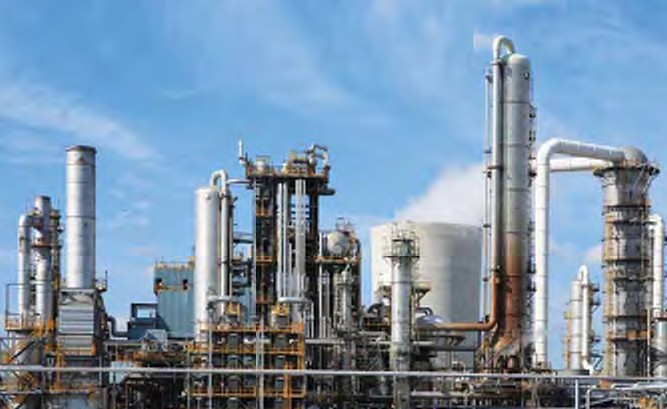
Pune-headquartered KSB Pumps, an Indian outfit of German multinational pipe and valve manufacturer KSB Pumps, since its inception in 1960 has gone from strength to strength on account of its cutting-edge technology, its excellent products and its first-class service. During the last six decades, it has amazingly scaled up from being a local supplier of submersible motor pumps to a being reputed global player of a wide range of high-quality products.
The Indian outfit specialises in centrifugal and suction pumps, high-pressure multistage pumps, industrial gate, globe and check valves, submersible motor pumps, monobloc and mini monoblock pumps, hydro pneumatic systems and control valves. This leading international manufacturer of pumps, valves, systems and central valves has a presence across the country with its own sales and marketing set-ups, manufacturing facilities and service operations.
Smiles a far-sighted Farrokh Bhathena, Director, Sales and Marketing, with justifiable pride on his face, “KSB India has invested in world-class facilities and cutting edge technologies where we produce centrifugal pumps and industrial valves and distribute across the Indian sub-continent. We have six manufacturing facilities located at Pimpri, Chinchwad, Khandala, Vambori, Sinnar (all in Maharashtra) and Coimbatore (Tamil Nadu) – all of which are fully equipped to design, test, fabricate and assure quality on all aspects of fluid mechanics in India. In short, all these plants are testimony to our immaculate manufacturing and engineering practices! Apart from these six manufacturing units, the company has a very strong marketing, sales and service set-up to offer solutions to our customers effectively.”
Besides the six manufacturing plants, the company has 4 zonal offices, 13 branch offices, 6 service stations, 325+ authorized service centres, 22 godowns and 1000+ authorized dealers. With a view to serving customers better and offering a wider range of products as well as design services, KSB has three companies in India — KSB Ltd, KSB Tech Pvt Ltd and KSB Mill Control Ltd.
Besides top-quality products and excellent service, the company has also a strong and aggressive marketing system and a sales and service set-up to offer effective solutions to its customers. All the pumps and valves offered on the market are through its very wide distribution network, which ensures that for every KSB pump and valve in use, there is a KSB sales and service outlet around the corner. Maintains Mr Bhathena, “Today, KSB has a huge product basket that caters to the requirements of every segment. We manufacture pumps and valves for petrochemical/chemical, standard industry, building, water and wastewater, agriculture, domestic (residential) and energy (power), and a a leading international manufacturer of pumps, valves, systems, and control valves.”

In fact, KSB Ltd is the first company to develop indigenous pumps for NPCIL’s 700 MW power plant.
Pointing to “our ability to deliver reliable and best- in-class engineered products and services,” Mr Bhathena adds, “The quality of our products is at par with the best international standards, and our practice of providing solutions makes KSB a preferred brand with customers.”

With rising demand for the company’s products at home as well as abroad, KSB has started making rapid strides on the financial performance front. During the last 12 years, its sales turnover has expanded almost two and a half times – from Rs 602 crore in calendar year 2010 to Rs 1,533 crore in calendar year 2021, with operating profit inching up from Rs 78 crore to Rs 202 crore and the profit at net level more than doubling from Rs 58 crore to Rs 149 crore during this period. The company’s financial position is very strong, with reserves at the end of December 2021 standing at Rs 976 crore – almost 28 times its equity capital of Rs 35 crore, that too after as many as 5 bonus issues – in 1983 (ratio 4:5), in 1986, 1984, 1996 and 2011 (all in the ratio of 1:1). The company enjoys a very strong liquidity position and its borrowings have been brought down from Rs 62 crore in 2020 to just Rs 3 crore in 2021. Little wonder that the interest burden is negligible around .03 per cent of its sales turnover. Thanks to this virtually debt-free position, the company’s balance sheet has become very healthy.
La Gajjar Machineries Pvt Ltd, an Ahmedabad-based pump manufacturing company, has come a long way since its inception 87 years ago. From humble beginnings in 1935 with the production of a one-of-its-kind hand blower designed by Laljibhai Gajjar, an extraordinarily talented techno-entrepreneur, the company has emerged as one of India’s most respected pump manufacturers, with its flagship brand ‘Varuna’ comprising globally acclaimed submersible pumps and open-well motors. From making India’s first oil-based pumps to integrated solar pumps, La Gajjar continues to deliver wellengineered pumps that bring water where it is needed. The company is aiming to be the preferred water solutions company for the domestic and agricultural sectors across the globe by virtue of its vision, techno-pioneering spirit, reliable technology and a growth-focused consumer-centric approach.
Says Dilip Thakkar, BU head, with justifiable pride, “Today we have 3 lakh sq m state-of-the-art manufacturing facilities with as many as five manufacturing units spreading over one km and a total installed capacity of one million pumps annually. With our teams’ consistent focus on quality and availability, LGM has had a double-digit CAGR in the last five years. Little wonder that today Varuna is the undisputed number one brand in almost 30+ countries, and the company aims to expand its footprint in other countries in the world rapidly.”
Maintaining that “we are aiming to continue with double-digit CAGR going ahead, spreading our footprint in European and American countries as we have penetrated the Middle East and African markets,” Mr Thakkar adds, “In the near future, the company plans to expand the business through foraying into and energy conservation products.”

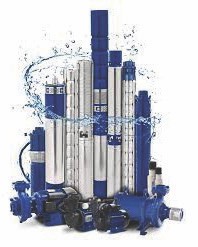
Referring to the prestigious Varuna brand, Mr Thakkar says Varuna is the most preferred partner for OEMs in India and the company intends to replicate this triumph globally. “Our vast range of products in the agricultural, domestic and industrial sectors has successfully fulfilled water needs in India and overseas since the last 8 decades on the back of vibrant consumer demand,” he says.
Asserting that Varuna pump is a brand which is driven by the spirit of innovation that makes a difference, Mr Thakkar adds, “Our mission is to set new standards in pumping solutions and respond efficiently and effectively to the world’s water and energy challenges. Today, La Gajjar and Varuna are brands that add value to water, the lifeline of the world. This drives us to create reliable, innovative and sustainable solutions for the world.”
“There are vast opportunities for growth for La Gajjar under Kirloskar Oil Engine (KOEL) going ahead,” maintains Aseem Srivastav, Chief Executive Officer of La Gajjar, appointed by KOEL, which has acquired the renowned Ahmedabad-based pump company. With a view to foraying into the electric pump business, KOEL, a leading manufacturer of diesel engines, generator sets and pump sets, has acquired the leading manufacturer of electric pumps by buying an over 76 per cent stake. The remaining 24 per cent stake will be acquired by KOEL over the next five years.
The acquisition of LGM provides KOEL a strong and established footprint in the electric pump market through LGM’s highly popular ‘Varuna’ and ‘Raindrop’ brands of submersible and mono-block pumps, and will help KOEL consolidate its position in the diesel and electric pump segment. As demand for diesel pumps is on the decline and that for electric pumps on the rise, KOEL has wisely acquired LGM.
Maintaining that “there are vast opportunities for growth of electric pumps, LGM under KOEL will strive hard to scale new highs going ahead,” Mr Srivastav says, and adds, “The company will devise new strategies to push up sales in the domestic as well as export markets and at the same time will search for making footprints in new markets.”
Pointing out that “as electrification is spreading fast in rural India, the demand for electric pumps will get a boost,” Mr Srivastav adds this augurs well for LGM. As KOEL has a remarkable distribution strength, LGM will be in a stronger position to take advantage of the rising demand for electric pumps in the country.”
According to Mr Srivastav, KOEL intends to use its wide distribution network to increase sales of pumps and achieve leadership in the complete pump segment.
Stressing that “LGM pumps are energy efficient pumps that consume less power, save electricity and thereby give higher returns on initial investment,” Mr Srivastav adds, “With a view to managing the business dynamically in the wake of the far-reaching effects of the pandemic that adversely affected the economy during the last two years, we took the prudent decision early in the year to focus on growth and the delivery of underlying operating profit.”

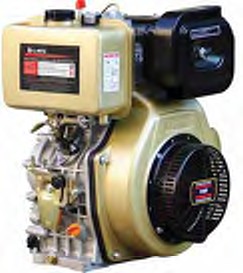
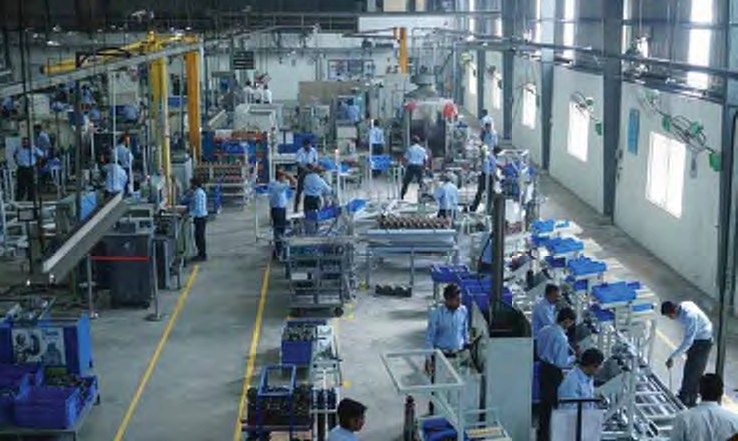
Pluga Pumps and Motors Pvt Ltd, a fully-owned subsidiary of Franklin Electric (USA) – considered the largest manufacturer of submersible electric motors in the world — is on the growth path and its dynamic Managing Director, Mr. Anoop Agarwal aims to double its business within the next five years from the current level of Rs 100 crore.
The Vadodara (Gujarat)-based company is engaged in the manufacture and export of premium-quality water pumping solutions at its state-of-the-art plant located at GIDC-Savli. Since its inception in 1987, the company has made a remarkable contribution to manufacturing the finest submersible water pumps and motors. Originally developed and designed through technical collaboration with Pleuger, Germany, the company produces at present the finest 100 mm (4") and 200 mm (8") submersible motor pumpsets in India. Says Mr Agarwal with justifiable pride, “Pluga is the first company in India to manufacture and introduce Noryl pumps for hygienic drinking water supply.”
Maintains Mr Agarwal, “After over 75 years of the establishment of Franklin Electric, we at Pluga continue to be a global leader of products and systems focused on complete water and fuelling solutions, comprising world-class brands and services that our customers trust, to keep moving forward.”
According to him, Pluga, being a Franklin Electric entity, offers products from different facilities globally, including comprehensive pressure boosters and inline sub-drive pumps which take care of the needs of the building and construction segments. He notes, “Our flexibility of providing pumpsets in SS, CI and SS fabricated material along with motors operating at varied voltage ranges; i.e., wide, standard and low, makes us the preferred choice of customers. Our diversification has led to building long-term relations with farmers, households, architects, plumbing contractors and builders who have placed their trust in our superior quality products.”
Pointing out that “Franklin Electric-USA is a globally renowned provider of manufacturing & distribution of products and systems focused on the movement and management of water and fuel, having a global footprint in countries including the US, Italy, Germany, the Czech Republic, Turkey, South-East Asia, India, China, Japan, the UAE, South Africa, Mexico, Brazil, Argentina and Australia,” Mr Agarwal adds that “we at Pluga strive to be a leading provider of quality water and fuelling systems having a focus on quality, availability, service, innovation and cost.”

Being an FE company, Pluga offers a comprehensive range of solutions for the building, construction and industry segments like hydro-pneumatic systems, multi-stage pressure booster pumps, inline sub-drive pumps with encapsulated motors, a dewatering range and higher HP motors for mining/industrial applications.
The company’s energy-efficient product range for agriculture and the domestic market includes V3 to V8 waterfilled submersible pumps, oil-filled motors, an MNRE-approved solar pumping system, monoblocs, VFD, controllers and cables. Its standard voltage motors are designed to meet energy-saving product needs of the urban market.
The company has the world’s best solar simulator for capturing real-time test results with autogenerated test reports. It uses a welding process which gives a robust strength to the product. Its well-established packing and tracking system ensures safe transit from distribution depot to dealer even at remote locations. The company assures quick after-sales and service through authorised service centres.

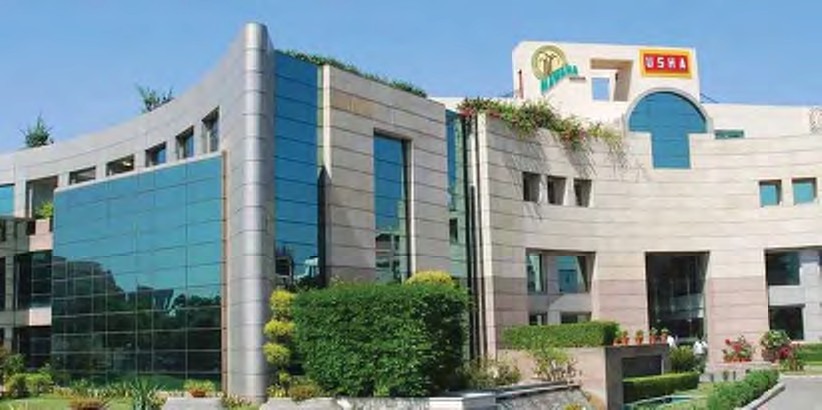
From its genesis as the Shriram group in 1889, Usha International Limited has been constantly evolving to keep pace with new realities and today it is India’s leading consumer durables company. The country’s first indigenous sewing machine was marketed under the brand name ‘Usha’ in 1936, and today the company has diversified into many more consumer segments — sewing machines ranging from the basic to the high-end, automated digital ones, fans, kitchen and home appliances, engines and pumpsets, electric motors and pumps, drinking water coolers, water dispensers and auto components.
With an infrastructure network spread across the country and 325 service centres and an inhouse customer call centre, Usha has built its legacy over 85 years, winning consumer loyalty in its journey as it evolved and innovated. Insists Mr. Dinesh Chhabra CEO, “Customer-centricity is one of the core pillars at Usha and dovetails into the larger corporate vision of aiding a healthy and active lifestyle, reiterated by Usha’s active association with sporting initiatives, including golf (junior, ladies and amateur) and cricket (association with the Mumbai Indians team and partnership with the All-India Association for Deaf Cricket, Divyang Cricket and All-India Association for Blind, to name a few).”
In its quest to create a more inclusive society, Usha launched the Usha Silai Schools, a pan-India, community-based social initiative that began in March 2011 and is aimed at empowering women from marginalised sections of communities in the remote hamlets and villages of India. The program currently has 29,450 Silai Schools across all the states of India, Nepal, Sri Lanka and Bhutan as of April 2022. Usha Silai imparts sewing & stitching and entrepreneurship skills to these women, essentially paving the way for a better tomorrow. Usha is among the rare companies that is not only walking the talk but walking that extra mile in order to create a better future for every life it touches

A simple switch ‘ON’ ensures fulfilment of all water needs with Usha water pumps. Its product portfolio includes selfpriming monoset pumps, centrifugal monoblock pumps, submersible pumps, sewage/dewatering pumps, pressure boosting pumps and pressure washing pumps, which are the key segments in which Usha offers a wide range of pump varieties to meet regional requirements. This is coupled with a robust service support network offering a quick response along with a wide coverage of retail outlets across the country.
The new UCM (Usha Centrifugal Monoblock) pump series and UHO (Usha Openwell Submersible) pump series are the company’s key initiative to provide superior world-class products for the discerning buyer. The UHO series pumps are anti-rust CED (Cathode Electro Deposition) coated for longevity and equipped with double mechanical seals for hydraulic leak-proof and energy-efficient operation, at par with international brands. Both the UCM and UHO series have a wide range of applications ranging from residential and agricultural to building and commercial.
At Usha, we constantly listen to the customer’s need, innovate and evolve to achieve excellence in all spheres of business activities.
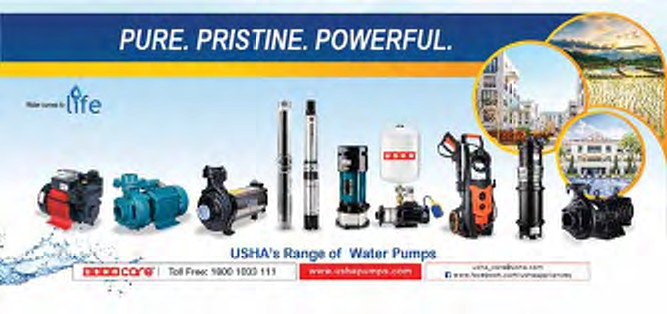
Kolhapur (Maharashtra)-based Chemlin Pumps and Valves Pvt Ltd, a leading manufacturer of centrifugal pumps and valves for the chemical and process industry, and a pioneer in the development of vertical submerger-type centrifugal pumps in India, is planning to enter the European markets and enter into a strategic alliance with an European suitable partner, reveals Milind Alwekar, its far-sighted and ambitious Chairman and Managing Director.
The company boasts of a modern manufacturing set-up spread over 12,000 sq ft of covered area and a total area of 44,000 sq ft at Kagal near Kolhapur in Maharashtra, where pump components are manufactured on machines using specially designed jigs and fixtures and CNC machines. The pump testing is done using state-of-the-art computerised equipment.
The company’s major products include vertical submerged-type centrifugal pumps, sump pumps, horizontal centrifugal process pumps, taper plug valves, orifice gate-type jacketed valves and angled valves. The company supplies its products to various industries, including fertilisers, steel, chemicals, pharmaceuticals and food processing.
Chemlin’s products are used in various process industries all over India and abroad. The products are designed and manufactured to international standards and offer all the desired features and options for maintenance-free operations. Chemlin products have been serving the chemical and process industry for the last three decades and are the first choice of maintenance engineers.

Pointing out that “Chemlin is the pioneer in the development of vertical submerged-type centrifugal pumps in India”, Mr Alwekar adds, “We have the most modern manufacturing plant with state-of-the-art technology and instrumentation for pump testing, which is done using a computerised pump test facility. We have a strong and dedicated workforce with technocrats having adequate experience of handling various grades of materials. Now we are planning to upgrade our machinery by inducting new machines to increase productivity as well as improve the quality of products. In the current year, we will be introducing ‘Chemlin’ disc type pumps for handling difficult slurries as well as shear-sensitive slurries.”
Clearly, the company is on track to maintain and expand its position as a favoured supplier of pumps and valves to the chemical and process industry.
We have recently completed our Phase I expansion wherein we have remodelled our manufacturing set-up and added a covered area for stores and manufacturing section,” Mr Alwekar says, and adds, “In Phase II we will be upgrading our pump testing to accommodate capacities upto 3,000 m3/hr and power upto 200 kW. So also, we have planned to add VMCs and HMCs to our manufacturing set-up. In the near future we plan to introduce ‘Chemlin’ disc type pumps for handling difficult slurries as well as shear sensitive slurries.”
Established in 1998 to promote the use of copper in the country, the International Copper
Association-India, the Indian arm of the ICA, has played a significant role in pushing up the use
of copper in India. The usage of copper, which was negligible in 1998, has by now exceeded 1.3
million tonnes, says Mayur Karmarkar, Managing Director of ICA-India, in an interview to Corporate
India.
Excerpts from the interview:
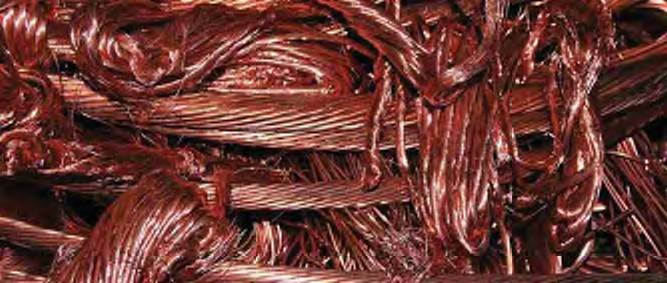
Corporate India: What are the activities of International Copper AssociationIndia?
Mayur Karmarkar: International Copper Association- India (ICA-India) works as the Indian arm of the International Copper Association Limited (ICA), the leading not-for-profit organization for the promotion of copper worldwide. ICA was set up in 1959 and has been working with the objective to grow the markets for copper based on its superior technical properties. With a strong partner ecosystem, ICA-India drives various advocacy initiatives to engage with regulatory bodies, policy makers and industry professionals across levels – decision-makers to those working directly in the field.
ICA-India works under two strategic pillars — Industry Advocacy and Market Advocacy. Under ‘Industry Advocacy’, it focuses on collaborating with the local copper industry to safeguard market access, build a positive image for copper and lead the industry on economy policy. The ‘Market Advocacy’ strategy focuses on being an ‘agent of change’ to have a lasting impact on copper end-use, influencing copper intensity-of-use and the metal’s competitive position. The key areas where we create an impact through our work are Clean Energy Transition (CET), Green & Healthy Buildings, Sustainability and Reliable Distribution Networks. ICA-India is recognized as an expert knowledge partner and valuable collaborator by a variety of organizations, including regulatory authorities, academic and professional institutions, trade bodies, industries, and individuals as endusers or domain experts.
CI: What is the demand and supply position of copper in India?
MK: As per the study conducted by ICA-India last year, India’s copper usage grew by 6% yoy between FY16 and FY20 to reach 1.2 million tonnes. The demand for copper is driven by its usage in the building construction and public infrastructure sector, the power sector, consumer durables, and the automobile and manufacturing sectors. These demand drivers have been severely impacted by the slowing down of economic activities since March 2020 due to the pandemic-induced lockdowns. As a result, copper demand shrank to a million tonnes in FY21.
Before the closure of Sterlite’s copper plant at Thoothukudi in Tamil Nadu, Hindalco, Hindustan Copper and Sterlite Copper were jointly producing around 800,000 tonnes of copper annually in India. Of this, around 500,000 tonnes were used domestically and 300,000 tonnes were exported, making India a net exporter of copper. Closure of the Sterlite plant has taken out roughly 400,000 tonnes of copper supply from the system. As a result, India has become a net importer of copper. India’s refined copper production in FY21 was 363,000 tonnes, while imports were 150,000 tonnes and exports stood at 46,000 tonnes. In the previous year, production was 405,000 tonnes with imports at 142,000 tonnes and exports at 27,000 tonnes.
CI: What are the key achievements through which ICA-India is creating an impact in the country?
MK: ICA-India is committed to supporting the UN Sustainable Development Goals (SDGs) and is working closely with various government agencies and stakeholders for improving the quality of life through electrical safety, energy efficiency, clean energy, better power quality and sustainability. Some of the recent key achievements of ICAIndia have been:
a. Electrician Training for Safer Buildings: A total of 10,022 electrical accidents were reported in India during 2019-2020, out of which approximately 40% were due to poor workmanship and maintenance issues in buildings. An electrician is a key influencer for selecting the right quality, brand and size of building wire during the renovation and other minor electrical installations in a house. ICA India has trained and certified more than 90,000 electricians in the past five years. This training and certification programme is implemented with support from our programme partners -- Finolex, RR Kabel, V Guard, KEI and Anchor by Panasonic. Further, to improve demand for these certified electricians, ICA-India has partnered with ‘Just Dial’ to host the contacts of these trained electricians on their web and mobile applications.

b. Technology Marketing to Room Air-Conditioner OEMs: Room AC OEMs in India are faced with the challenge of producing reliable and durable energy efficient ACs, by using ‘green’ refrigerants at economical costs to meet the targets set by the Government of India’s ‘India Cooling Action Plan’. ICA- India supports various OEMs in optimising their heat exchanger designs with MicrogrooveTM smaller-diameter copper tube technology. These heat exchangers have helped in achieving energy savings of 8.5% and refrigerant savings of more than 20%, and require less material than the 7 mm diameter copper tubes while providing the same cooling performance. Today, more than 37% of room ACs sold in India are using MicrogrooveTM technology.
c. Faster adoption of High-Efficiency Motors: The major challenge for faster adoption of energy-efficient motors in industries has been the high upfront cost, particularly for MSMEs. ICA India as a knowledge partner to Energy Efficiency Services Ltd has been instrumental in developing and implementing the National Motor Replacement Programme (NMRP) since 2017. This programme has not only created large scale awareness in industries to shift from lower efficiency (IE1 & below) electric motors to premium efficiency (IE3) motors but has also helped industries by providing easy finance at affordable prices to them through the bulk procurement model. This has led to a market transformation by providing IE3 motors at an affordable price and increasing the IE3 marketshare, thereby resulting in substantial energy savings and carbon emission reduction annually.
CI: What are the new initiatives undertaken by your organisation to support India’s commitment towards Net Zero by 2070?
MK: Under its Clean Energy Transition (CET) objective, to help decarbonise the road transport sector, ICA-India has rolled out a new programme initiative on e-mobility with an aim to catalyse the market transformation of electric two- and three- wheelers in India. Under this initiative, ICA-India has been working with Convergence Energy Services Ltd (CESL) to aggregate the demand of electric two- and three-wheelers through an online platform (myev.org.in) currently available in four states, including Delhi. Further, in collaboration with Power Sector Skill Council, ICA-India has developed a comprehensive training module for the technicians who will be operating and maintaining the EV charging stations across India. In the wake of the recent fire incidents related to electric two-wheelers in the country, and with the support of Niti Aayog, we have rolled out a large-scale survey to gauge consumer perceptions, which will aid us in furthering policies and schemes implemented by the government.
Additionally, to reduce the reliance on fossil fuels and lessen the burden of the power subsidy in the agriculture sector, the use of solar irrigation pumps is a clean and sustainable alternative for an energy-efficient future of irrigation. Currently, the PM-KUSUM scheme by the government is working towards providing the farmers with solar pumps at a nominal cost, which will not only address the clean energy transition challenges but also act as a source for additional income by selling the surplus power back to discoms. ICA-India has been working in Haryana and Chhattisgarh to understand the challenges in the implementation of this scheme and study the socioeconomic impact of solar pumps installed till date. ICA has formed an ‘Alliance for Solarised Irrigation’(ASI) to serve as a coalition where organizations and individuals can work together to enable and promote increased and sustainable use of solar-powered irrigation systems in India. ASI will help in policy advocacy and hand-hold the state nodal agencies for better implementation of the government schemes on the ground.

April 15, 2025 - First Issue

Industry Review

Want to Subscribe?
Read Corporate India and add to your Business Intelligence

![]() Unlock Unlimited Access
Unlock Unlimited Access
Lighter Vein

Popular Stories
Archives
